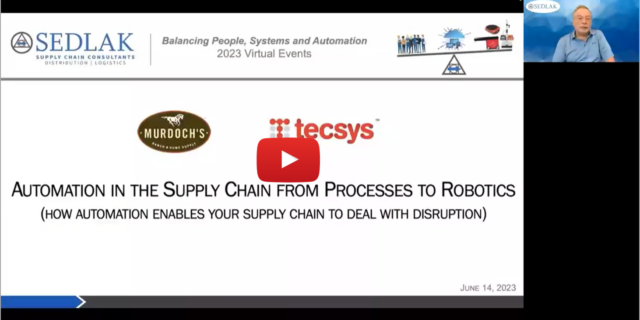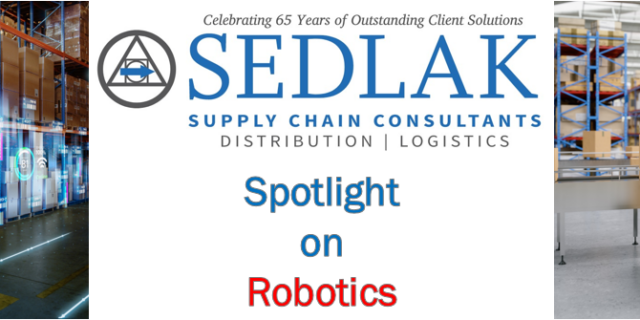Distribution Strategy and the Changing Dynamics of the Pharmaceutical Supply Chain (Pt. 3)
October 24, 2014 By: Senior Management | Topics: HealthcareSo far in this series we have examined the complexities of stringent inventory requirements and mutable industry dynamics that are influencing pharmaceutical distribution strategy. Wholesalers, in particular, are under increasing pressure to balance regulatory compliance, operation costs and customer service levels.
This week we learn why supply chain optimization and management is rising to the top of cost reduction strategies among C-level executives in healthcare.
Part 3: Optimizing Distribution Processes
Supply chain distribution optimization is increasingly being viewed as a means to contain costs while improving patient outcomes.
The 2013 Executive Survey on Supply Chain Management, sponsored by the Association for Healthcare Resource & Materials Management (AHRMM), showed that 78 percent of C-Level executives in healthcare agreed that supply chain optimization will be one of the top three expense reduction strategies used to meet the challenges of healthcare reform. Further, the study showed that 86 percent of C-Level executives agreed that supply chain management must become a core competency, and 92 percent of C-Level executives agreed that supply chain management has a direct critical relationship with, and impact on, quality outcomes.
The Healthcare Industry Distributors Association (HIDA) reports…“Provider organizations expect reimbursement cuts to force reductions in operating margins of up to 30 percent through 2015. While all costs are on the table, the supply chain is universally considered the top priority.”
Healthcare providers are ready to look beyond product cost and examine end-to-end supply chain costs, and expect manufacturers and distributors to help them become leaner and more effective. Assessing waste in the supply chain from the manufacturer all the way to the patient is critical (e.g., logistics, inventory management, data management, and customer demand management).
The need for productivity in reducing costs is very apparent when you look at the healthcare distribution industry as a whole, which has very thin margins. Typically, pharmaceutical wholesaling, with a flawlessly-run network, will profit about one percent of sales, so there is very little margin for error.
Pursuing business model transformations to aggressively reduce overall supply chain costs and distributor operating costs is vital. Central to facilitating this efficiency is the employment of warehousing technology solutions. Such automated systems will maintain consistent high levels of throughput, while achieving excellent order accuracy rates.
But supply chain executives should not make the fundamental mistake of thinking that technology should be the basis and starting point of their distribution solution. Instead, thorough conceptual design aimed at process improvement should be the central aspect of any automated solution, rather than a focus on the material handling equipment.
Approaching system design from a process perspective does not necessitate the implementation of any specific automated technology, but leaves the door open to any options to achieve the objectives of the DC’s supply chain executives.
According to Dr. Hui Zhao, Assistant Professor of Supply Chain Management, Department of Supply Chain and Information Systems, Smeal College of Business, The Pennsylvania State University, “To adapt to this changing healthcare market, system flexibility would also be a critical feature of an automated warehouse solution. Historically, the more you automate the less flexible your process. That is, unless your automation is highly flexible, as well. With the increased manufacture of biologic drugs, the need exists for more careful handling of these types of products in the distribution processes and transportation. Astute attention to the selection of material handling automation is critical here.”
“It is well understood that pharmaceutical distribution is fraught with risk,” continued Zhao. “Product sterility, the handling of controlled substances, potential breakage of fragile glass containers, strict temperature controls for biologics – these risks also need to be assessed against the material handling systems under consideration. Automated systems that were installed in distribution facilities eight or ten years ago may not be the most efficient systems today for handling the increased volumes of sensitive biologics and other special drugs.”
“The first step when considering a material handling build-out would be to have a full conceptual design prepared to define the distribution center’s needs and parameters,” said Zhao. “A thorough conceptual design ensures that the right amount of technology will be implemented for current and future growth needs. Too much equipment is capital absorbing. Too little equipment will necessitate higher operating costs by increasing labor.”
In my next post, I present the five key components to a comprehensive distribution network assessment.
Sedlak Management Consultants is a supply chain consulting firm specializing in distribution consulting. Founded in 1958, Sedlak’s broad experience in network strategy, facility design, distribution/fulfillment, and information systems allows us to integrate the latest technology, best practices and industry benchmarks to help our healthcare clients achieve supply chain excellence.
We hope that you will find the insights contained in this series helpful to your business. If there is any way we can be of assistance with your supply chain and logistics strategy development, please feel free to contact us by filling out our form below.





